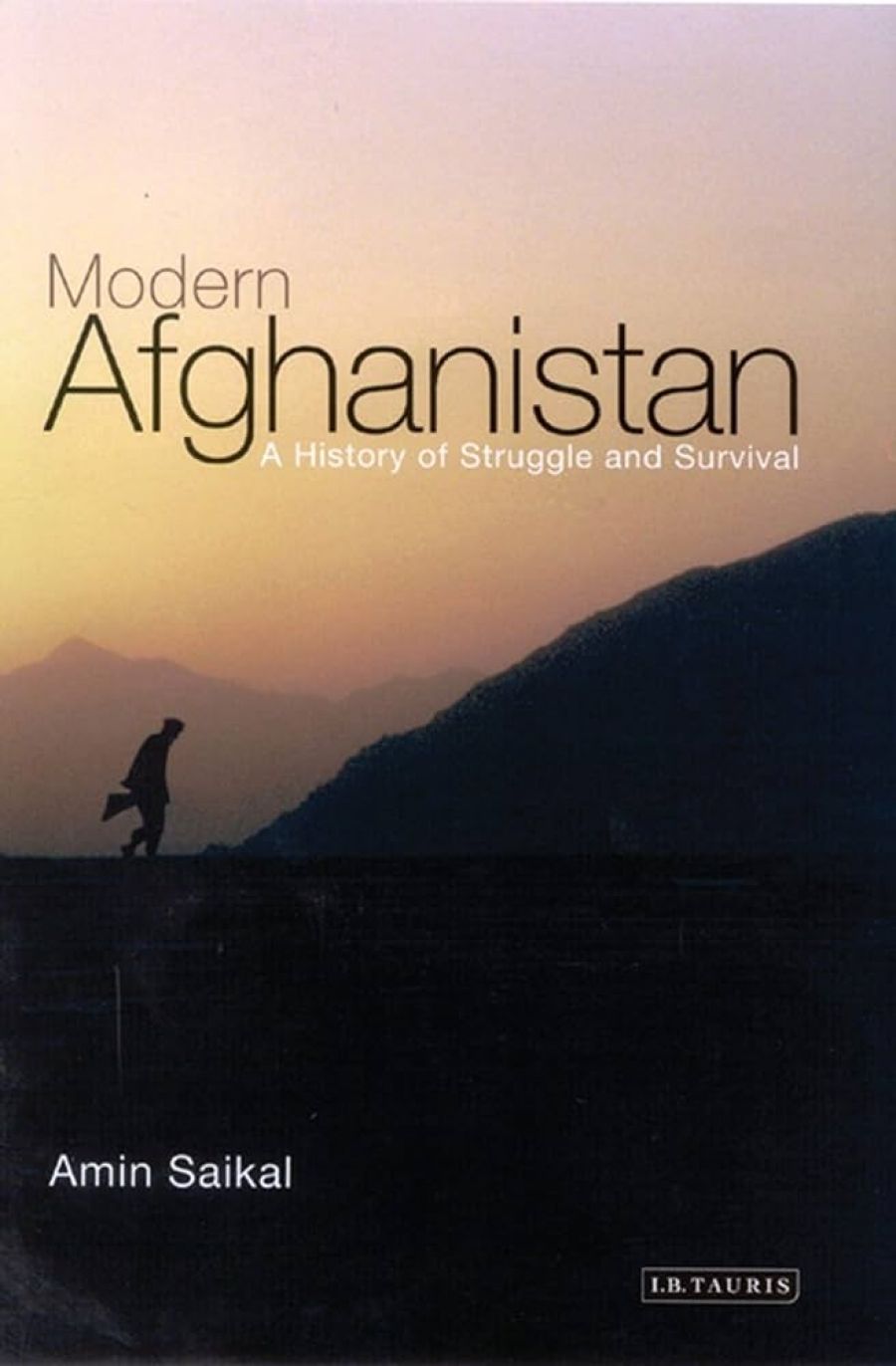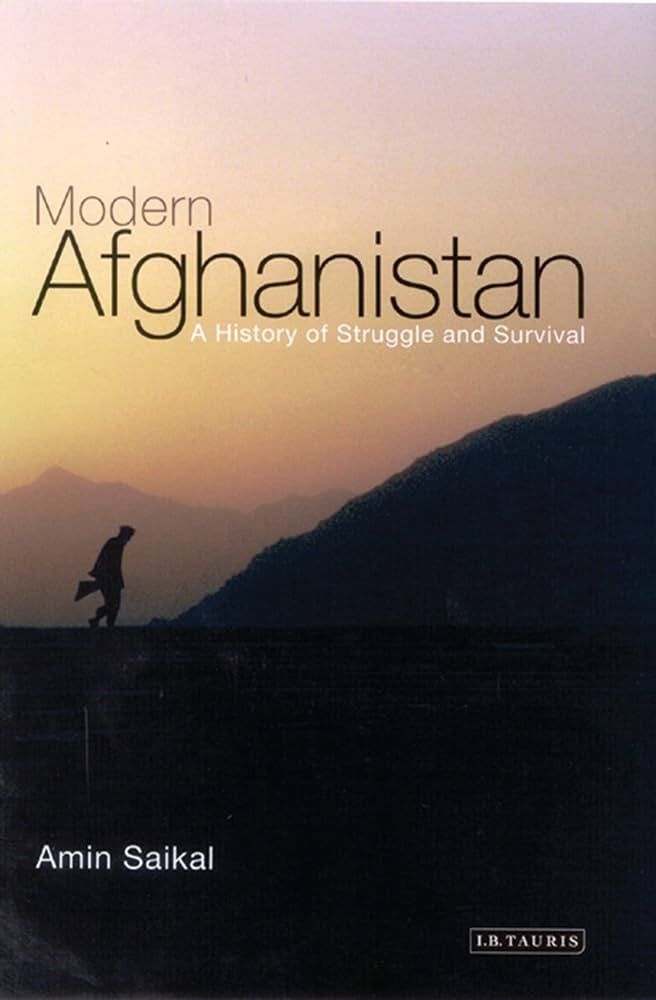
- Free Article: No
- Contents Category: History
- Review Article: Yes
- Article Title: Beyond the sanitised
- Online Only: No
- Custom Highlight Text:
Modern Afghanistan provides a nuanced understanding of developments in a country that has attracted the attention of academics and analysts for more than two decades. A number of good books have appeared dealing with politics in and around Afghanistan since the early 1980s. Amin Saikal’s recent book benefits from these accounts, but differs in one way: it is an insider’s account, with objectivity instilled by distance and academic training. As an Australian of Afghan origin, and as an expert on the politics of West and Central Asia, he draws upon a wealth of printed, oral, political and sociological research to delve into the creation and problems of Afghanistan.
- Book 1 Title: Modern Afghanistan
- Book 1 Subtitle: A history of struggle and survival
- Book 1 Biblio: I.B. Tauris, $59.95 hb, 342 pp
- Book 1 Cover Small (400 x 600):

- Book 1 Cover (800 x 1200):

Saikal explores the causes of Afghanistan’s turbulent history since the eighteenth century with the aim of assessing its ‘capacity for rejuvenation’ in the new millennium. To find an answer, he investigates the socio-cultural history of Afghanistan, with an emphasis on the tribal culture, its impact upon Afghan politics and the techniques used by successive rulers to integrate the micro-societies into a state. But he carefully links the domestic factors with external power plays and movement of ideas across state boundaries. He argues that three main interrelated variables are ‘absolutely critical to understanding and unpacking the social and political complexities of Afghanistan’: royal polygamy, foreign interference and ideological extremism. The argument is developed in nine chapters that discuss the varying mix of these factors through Afghan history.
The book provides an interesting account of the role played by various rulers since the Durrani monarchy of 1747 in transforming Afghanistan from ‘an idea’ to a Republic, a Marxist and then an Islamic state, to one where it came to be identified as a failed state leading to the removal of the Taliban in 2001. It explains how the practice of polygamy and maintaining concubines by successive rulers proliferated the number of aspirants to power as well as the frequency of intrigues that led to assassinations and changes of régime. But he constantly places these intrigues within the context of major powers’ presence in the region, and the differing views within Afghanistan on how to balance them. For instance, Saikal describes how Habibullah (1901–19) married two women, Ulya Hazrat and Ulya Janab. Mohammad Nadir, Ulya Janab’s brother, favoured accommodating British interests in the region whereas Amanullah, Ulya Hazrat’s son, did not share these views. Influenced by his father-in-law, Tarzi, Amanullah argued for an ‘independent Afghanistan’ and initiated a close relationship with the Soviet Union upon assumption of power in 1919.
Saikal draws upon a wealth of information to discuss foreign policy during the Nadiri dynasty (1929–73). He details how the struggle for power and influence between King Zahir Shah and Daoud (his cousin and brother-in-law) shaped Afghanistan’s foreign policy. Daoud’s preference to relegate the monarch to a titular head in the 1950s coalesced with Afghanistan strengthening relations with the Soviet Union and heightened tensions with Pakistan. Zahir Shah’s resistance found expression in pursuing a more pro-US policy.
Embedded in the discussion is Saikal’s criticism of the Pushtun dominance of Afghanistan and their failure to integrate other ethnic communities into the agenda of state-building on a sustained basis. By providing insights into the role of Islam and the gradually increasing influence of Marxist groups, he presents a picture of rulers who were guided by their personal agenda at the expense of the citizens. But Saikal does not exonerate external actors for playing a role in promoting and sustaining extremism. The promotion of the language of Jihad and Pakistan’s geopolitical games are discussed adequately without repeating the information that is already in the public domain.
The concluding chapter explores the US role in post-Taliban Afghanistan. Saikal distinguishes between transitory and permanent state-building in Afghanistan. A genuine reconstruction for him embodies a process of developing an ‘appropriate legal-rational framework and culturally relevant processes’. It also requires sustained commitment by the US to Afghanistan’s future, but he seems less convinced that Washington would not be guided by its own logic of the ‘war on terror’.
Saikal’s book is more than just a history of Afghanistan. It provides insights into the role of Islam, women, family politics and geopolitical forces that shape a country’s future and past. His references to the use of the term Amirul Momineen by a number of Afghan rulers prior to the Taliban demonstrates how Islamic concepts had been relevant to politics in the region for decades. His account of the interplay between progressive and traditional notions of Islamic identity during Amanullah’s régime also typifies the place accorded to women in such debates.
Saikal also provides an alternative reading of Afghan history. Amir Abdur Rahman Khan (1880–1901) is credited with taking ‘serious steps towards building the first modern state’ in Afghanistan. But he is not presented as a benign ruler: he is criticised for practising ‘methods just short of genocide’. Saikal details the changes during Habibullah’s régime to establish that he was a better ruler than his father.
Modern Afghanistan is essential reading for those interested in the country. It would be extremely useful for any student or scholar of the region. But it is also recommended for those willing to go beyond the sanitised accounts of politics in developing Muslim states: they will find much information that locates human relationships at the centre of political processes, with sometimes sad consequences.


Comments powered by CComment